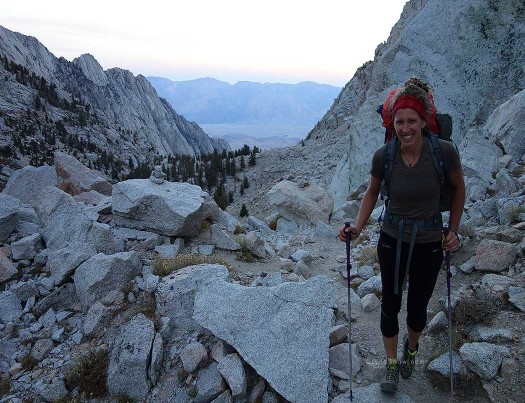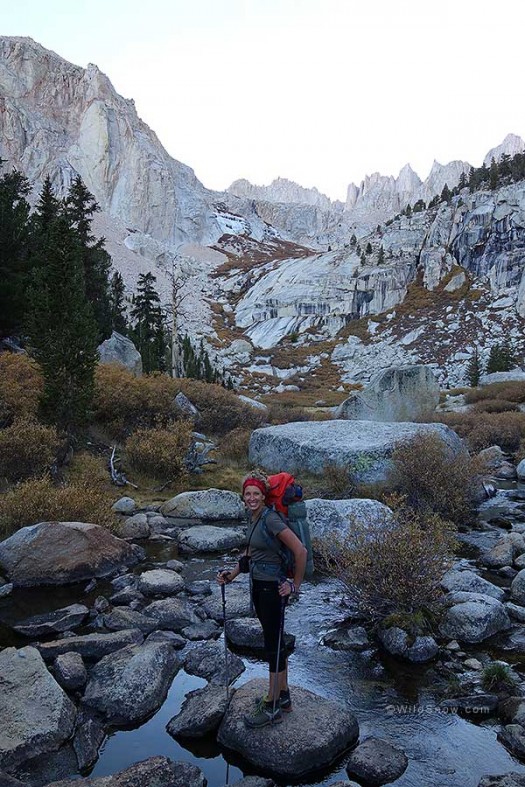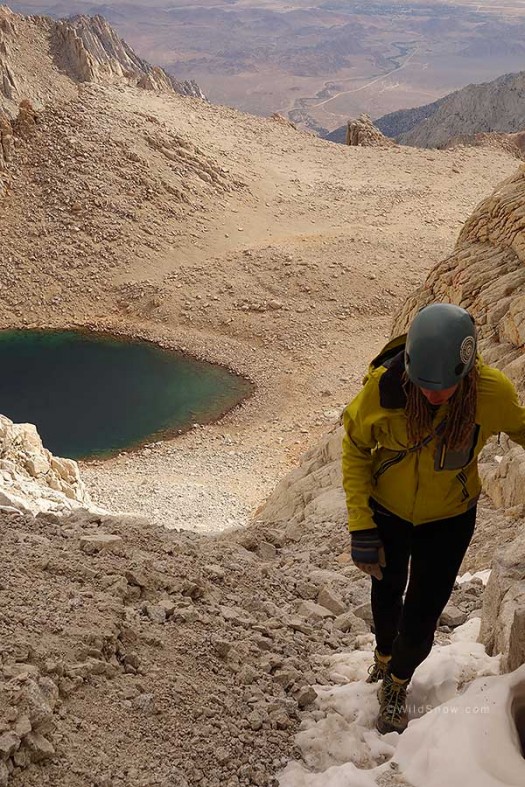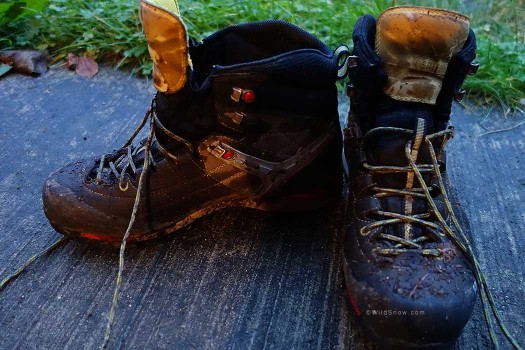Amy Heuer
If you have plans for backcountry mountaineering or glacier exploration this spring or summer, these may be the boots for you. Not only good looking with their brilliant red, yellow and grey color scheme, they are listed as the “lightest and most agile crampon-compatible” boot available.
It was yet another rainy day in Juneau last fall, the time of year where most locals head south to visit relatives or work on their tan before returning for the colder, darker winter of our southern neighbors. I had just returned from the warmer temps where I first tested these boots on Mt. Whitney. They performed great in the dry alpine climate, and I wanted to see how they held up on Alaska’s wetter terrain.
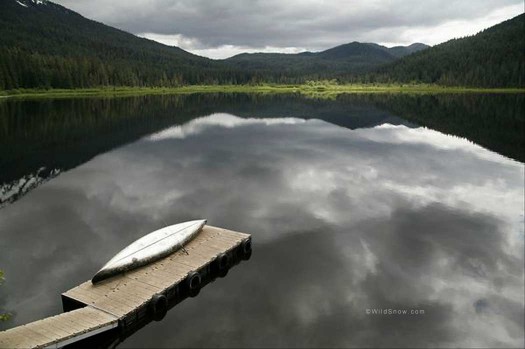
Windfall--Windfall Lake, the rewarding views after a long trek... now if only there was snow on those peaks.
After donning my rain gear and gulping down some coffee I ran out the door to meet my friends. Our mission was a twelve mile hike over Montana Creek Pass with ending views at a gorgeous lake. The trail was muddy and I laughed as Isunk into puddle after mud puddle, carefully picking my way through the foliage and slippery tree roots. I was immediately thankful for the stiffness of the boots. Durable like a ski boot with nylon plates built into the midsoles, my ankles felt snug and in control the whole time. The stiff sole and the plastic insert makes these boots perfect for attaching mountaineering crampons, and although they were not necessary on this excursion, they would be useful on steep snow climbs and glacier adventures.
The suede leather uppers held up throughout the wet slog while the Gore-Tex waterproof membranes let my feet breathe despite how clammy they felt. In the deeper muddy sections of trail, some moisture leaked in around the tongue of the boot and under the lacing, saturating my woolen socks over time. Not entirely uncomfortable, but I wouldn’t guarantee 100% waterproof either.
My first go on Mt. Whitney with the boots, my feet were uncomfortable after a couple hours. I needed to stop and massage my foot before going further. It was obvious that the boots needed more of a break-in period. Salewa offers a multi-fit footbed technology to adjust comfort and space. My normal size 9 was a bit too big, so I fixed the space issue by leaving the black insert and adding Superfeet insoles. The fine-tuning of the dual footbeds allowed for a perfect fit of the boots. I could flex my toes and shift my feet ever so slightly, without feeling any heel lift. The wire criss-cross support around the heels and ankles coupled with the lacing system provides flexibility and added precision fit. Just don’t forget to wear these around the office before hitting the trails.
Since my first day on granite rocks to my wet traverse of mountain passes, these boots have survived sharp rocks, scree fields, rock climbing, smearing, mud swamps, creek crossings, and are still looking forward to glacial camping adventures this winter. The Vibram soles are looking brand new after a wash and their longevity remains intact. For lightweight, durability and precision fit these boots are a must have for getting out into the mountains to scout out those backcountry ski lines.
Shop for men’s and women’s Salewa Rapace GTX boots here.
WildSnow Girl, Amy (Heuer) Helm, grew up in the Colorado Rocky Mountains. When she wasn’t skiing, she was flying small planes with her father. Now she pursues both passions in Juneau, Alaska, where she is an aviation mechanic.

